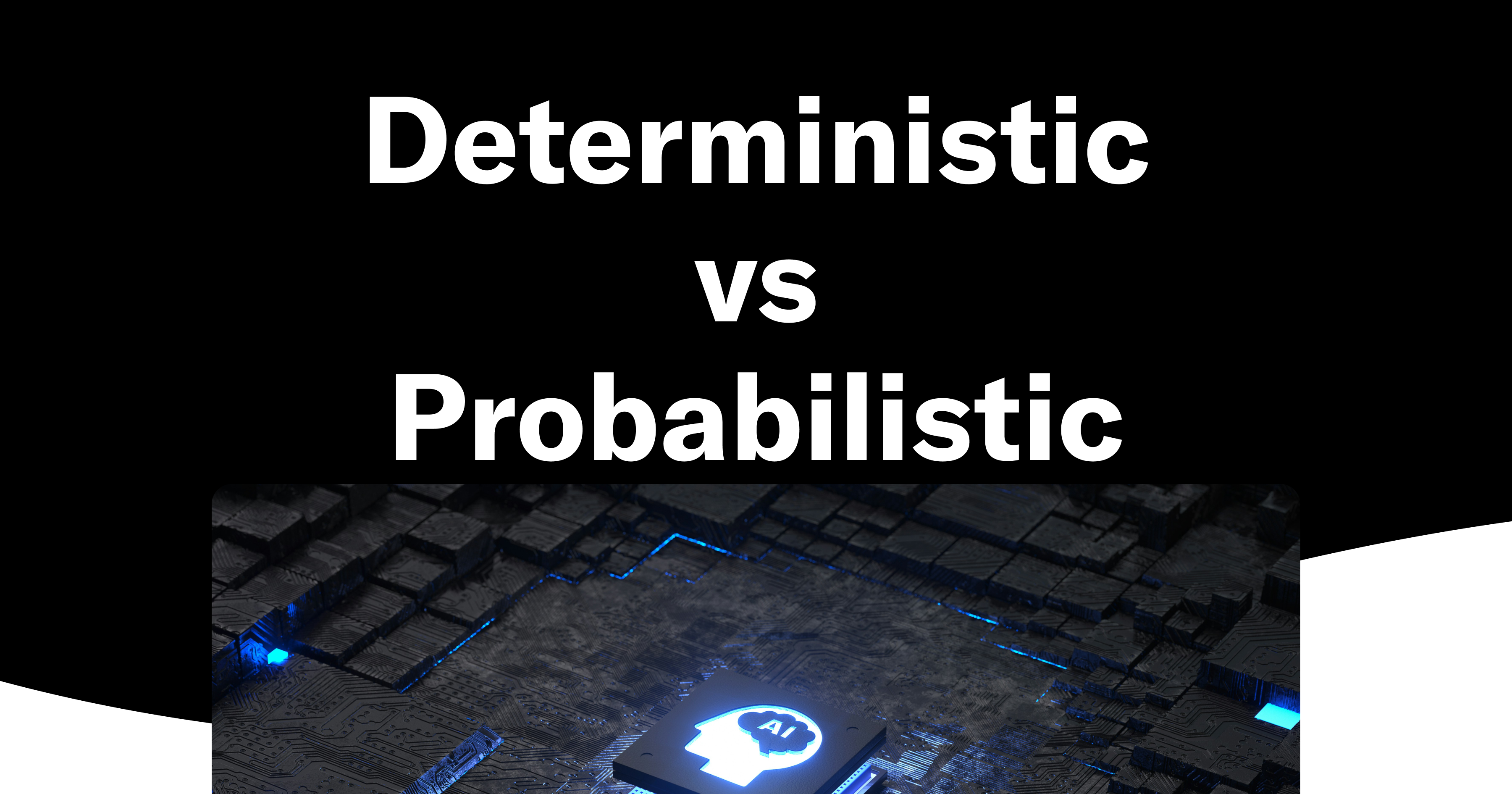
Deterministic
“For a given particular input, always producing the same output”
Probabilistic
“subject to or involving chance variation”
AI has arrived…
When it comes to AI we are all in the same boat - evaluating how it will impact each of us.
We are all now evaluating how it will impact our job, how it will impact the company we work for, the industry we work in and the wider economy and society. Some of us are excited, some are nervous, some are scared and many jump between the three!
But this evaluation is made harder by the fact that AI is a label that is rapidly losing meaning as every software vendor adds “AI” to their marketing. A better framework to evaluate new software, its potential impact and where and when to use it, might be to consider whether it is “Deterministic” or “Probabilistic”.
…after 50 years of personal computers
Microsoft created their famous mission statement - "A computer on every desk and in every home” - in 1975. At the time this looked ludicrous to the average person but the internet made it a reality.
Over those 50 years software has changed to an unbelievable degree but the vast, vast majority of software has had one common characteristic - it has been deterministic.
We’re used to Deterministic Software…
The software we are used to today is deterministic software. This means that it always produces the same outputs from a set of inputs.
For example: Sum 5 + 5 in Excel and you always get 10 or press ‘create report’ in Xero and you will always get the same report with the same numbers.
Deterministic software is so widespread that software is, today, defined by its “deterministic” characteristics: we think of software as having a defined feature set, we use it for tasks that have outcomes that can be measured objectively and we expect it to be 100% accurate for those outcomes.
Deterministic software:
- Defined feature set
- Suited to tasks that have outcomes that can be objectively measured
- Expected to be 100% accurate
..and now we have Probabilistic Software
Probabilistic software is different. Probabilistic software can and will produce different outputs from a set of inputs.
For example: Ask ChatGPT to produce a picture of a lion and each time it will produce something different.
Today’s AI models (Chat GPT, Google Gemini, Claude, etc) are all probabilistic as are the most common AI apps (Jasper, Granola, etc.). Probabilistic software is defined by the fact it typically has a looser feature set and it is understood that the outcomes it produces will vary.
Probabilistic software:
- Wider, looser feature set
- Suited to tasks that have outcomes that are subjectively measured
- Understood that 100% accuracy may not be possible
Probabilistic Software is currently in a hype phase
Probabilistic software is rightly creating huge excitement because it hugely expands the range of tasks that software can tackle. As probabilistic software is in its infancy it is being applied very widely as users find its best applications. There will be many!
However there are also clear signs of AI and probabilistic software being applied to areas where it is not suited. For example, there has been some talk of accountancy software, CRMs and other systems-of-record being no longer needed with AI being expected to create the necessary reports and outputs as required.
This is not likely for two reasons. Firstly, systems-of-record (such as accountancy software like Xero and QBO, and CRMs like Salesforce and Hubspot) are required to be 100% accurate from a reporting perspective therefore there is no benefit in using probabilistic software to create the reports. Secondly, systems of record are not just reporting systems but the basis on which many workflows and jobs-to-be-done (JTBD) are performed. These workflows require a consistent set of data upon which to act - again, 100% accuracy is required therefore there is no benefit in using probabilistic software to create this foundation.
It is, instead, in some of the workflows and JTBD that sit on top of systems-of-records that probabilistic software will have a huge impact.
Both Deterministic and Probabilistic software will be needed
Today, accounting and finance teams have excellent deterministic software. In addition, coming to market are a range of excellent probabilistic solutions. This will result in an increase in productivity in all teams and firms.
The only risk comes from using the wrong type of software for the wrong task!
When to use Deterministic software in accounting and finance:
- When there is an objectively correct answer: e.g. “What was last month’s gross margin?”
- When a defined outcome is required: e.g. the Aged Payables report
- When consistency is required: e.g. any report that requires everyone to be looking at the same data
When to use Probabilistic software in accounting and finance:
- When creativity is required
- When inaccuracy can be tolerated because a human will finish the task





